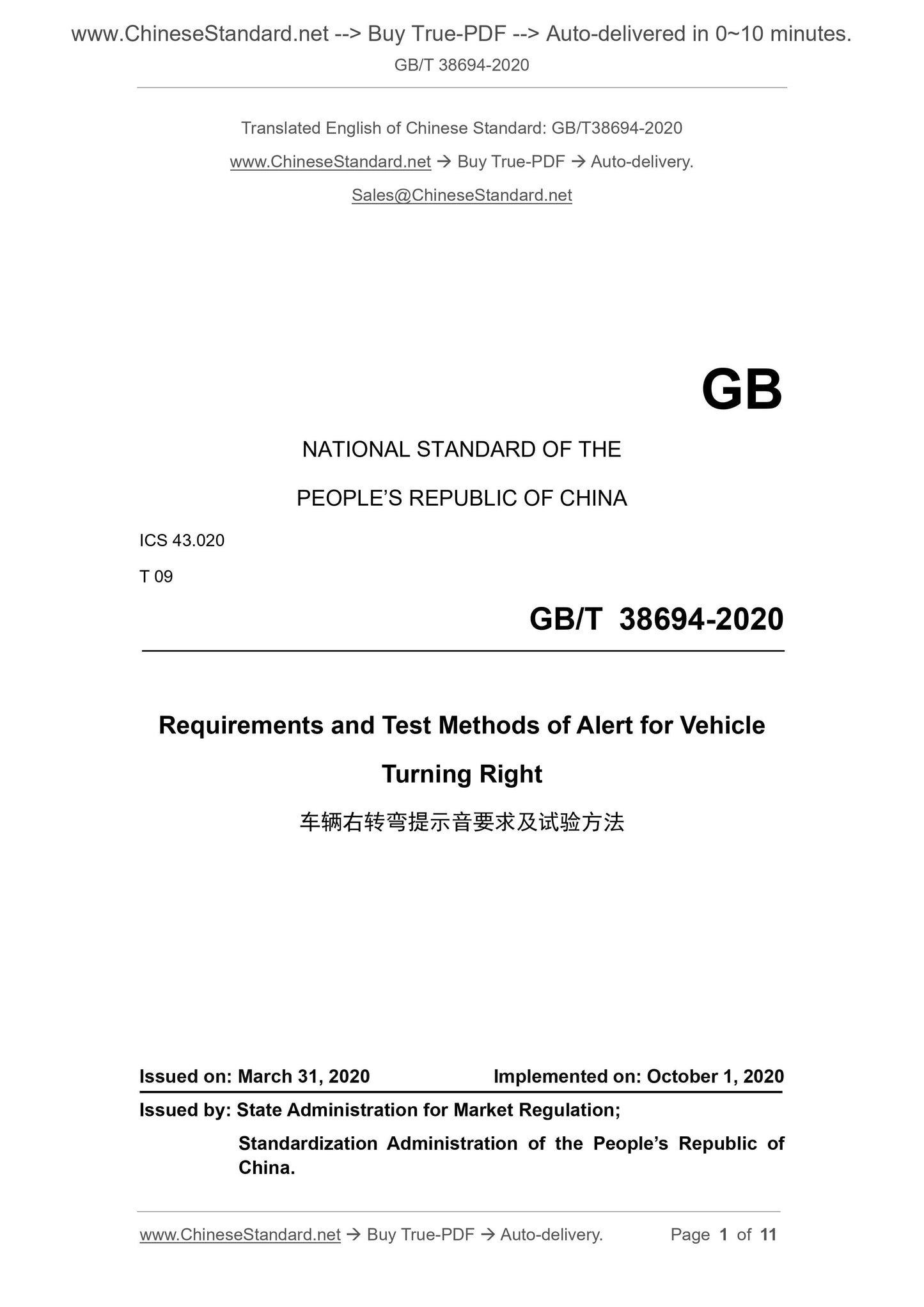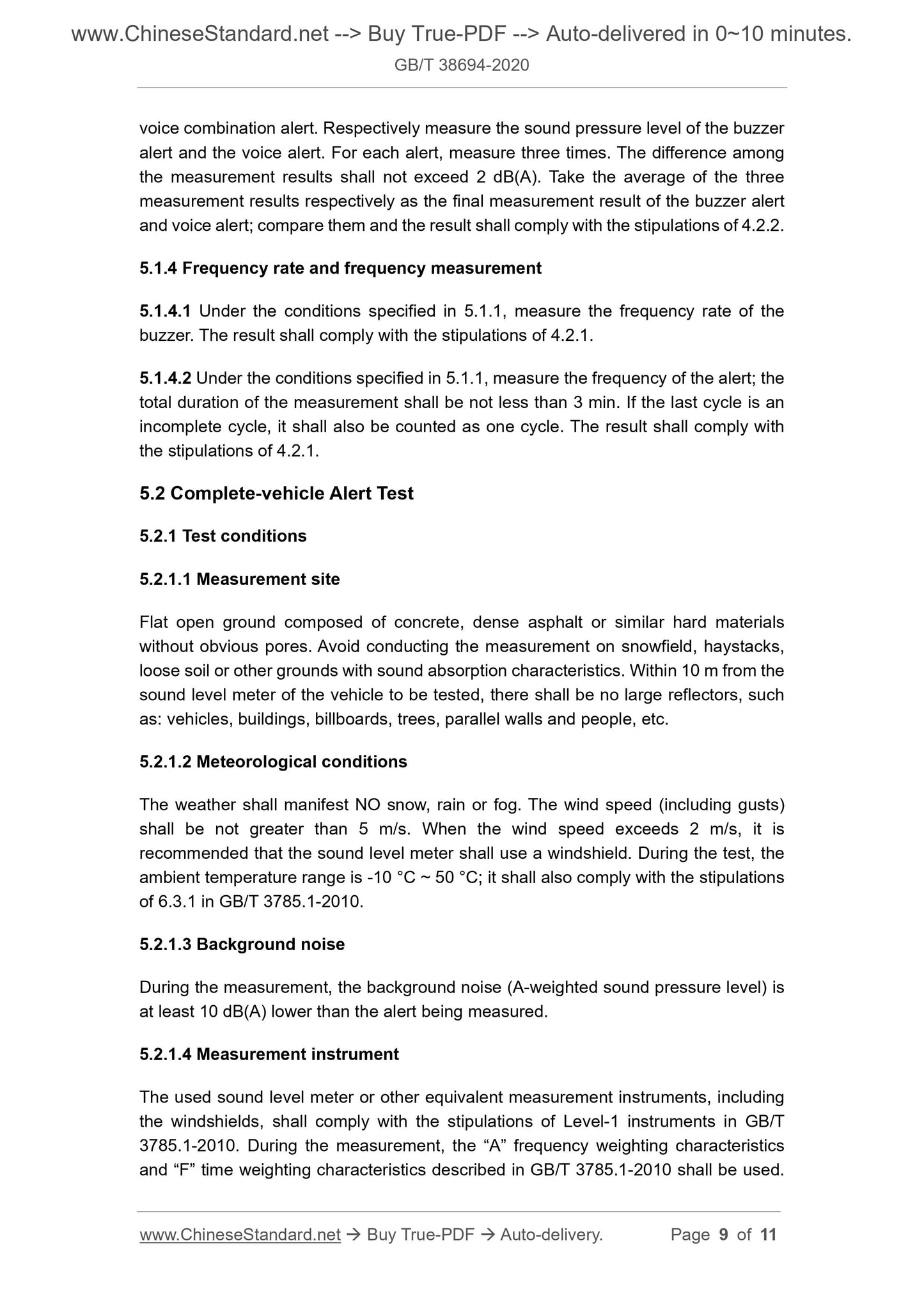1
/
of
5
www.ChineseStandard.us -- Field Test Asia Pte. Ltd.
GB/T 38694-2020 English PDF (GB/T38694-2020)
GB/T 38694-2020 English PDF (GB/T38694-2020)
Regular price
$125.00
Regular price
Sale price
$125.00
Unit price
/
per
Shipping calculated at checkout.
Couldn't load pickup availability
GB/T 38694-2020: Requirements and Test Methods of Alert for Vehicle Turning Right
Delivery: 9 seconds. Download (and Email) true-PDF + Invoice.Get Quotation: Click GB/T 38694-2020 (Self-service in 1-minute)
Newer / historical versions: GB/T 38694-2020
Preview True-PDF
Scope
This Standard specifies the terms and definitions, requirements and test methods ofalert for vehicle turning right.
This Standard is applicable to alert device for vehicle turning right, and trucks installed
with the device, and with the maximum design total mass greater than or equal to
12,000 kg. Other vehicles may take this as a reference in the implementation.
Basic Data
| Standard ID | GB/T 38694-2020 (GB/T38694-2020) |
| Description (Translated English) | Requirements and Test Methods of Alert for Vehicle Turning Right |
| Sector / Industry | National Standard (Recommended) |
| Classification of Chinese Standard | T09 |
| Classification of International Standard | 43.020 |
| Word Count Estimation | 7,749 |
| Date of Issue | 2020-03-31 |
| Date of Implementation | 2020-10-01 |
| Quoted Standard | GB/T 3241-2010; GB/T 3785.1-2010 |
| Issuing agency(ies) | State Administration for Market Regulation, China National Standardization Administration |
| Summary | This standard specifies the terms and definitions, requirements and test methods for vehicle right-turn prompting sound. This standard is applicable to the vehicle right-turn prompt sound device, and the truck with the maximum design total mass greater than or equal to 12000kg installed with the device. Other vehicles can be implemented by reference. |
Share









